Top Tips for First-Time Travelers to Japan
Traveling to Japan is a wonderful adventure full of new experiences, intriguing culture, and delicious food. However, it can also be a daunting experience, especially for first-time travelers. We’ve compiled a comprehensive list of tips and advice to help you plan a smooth and enjoyable journey.
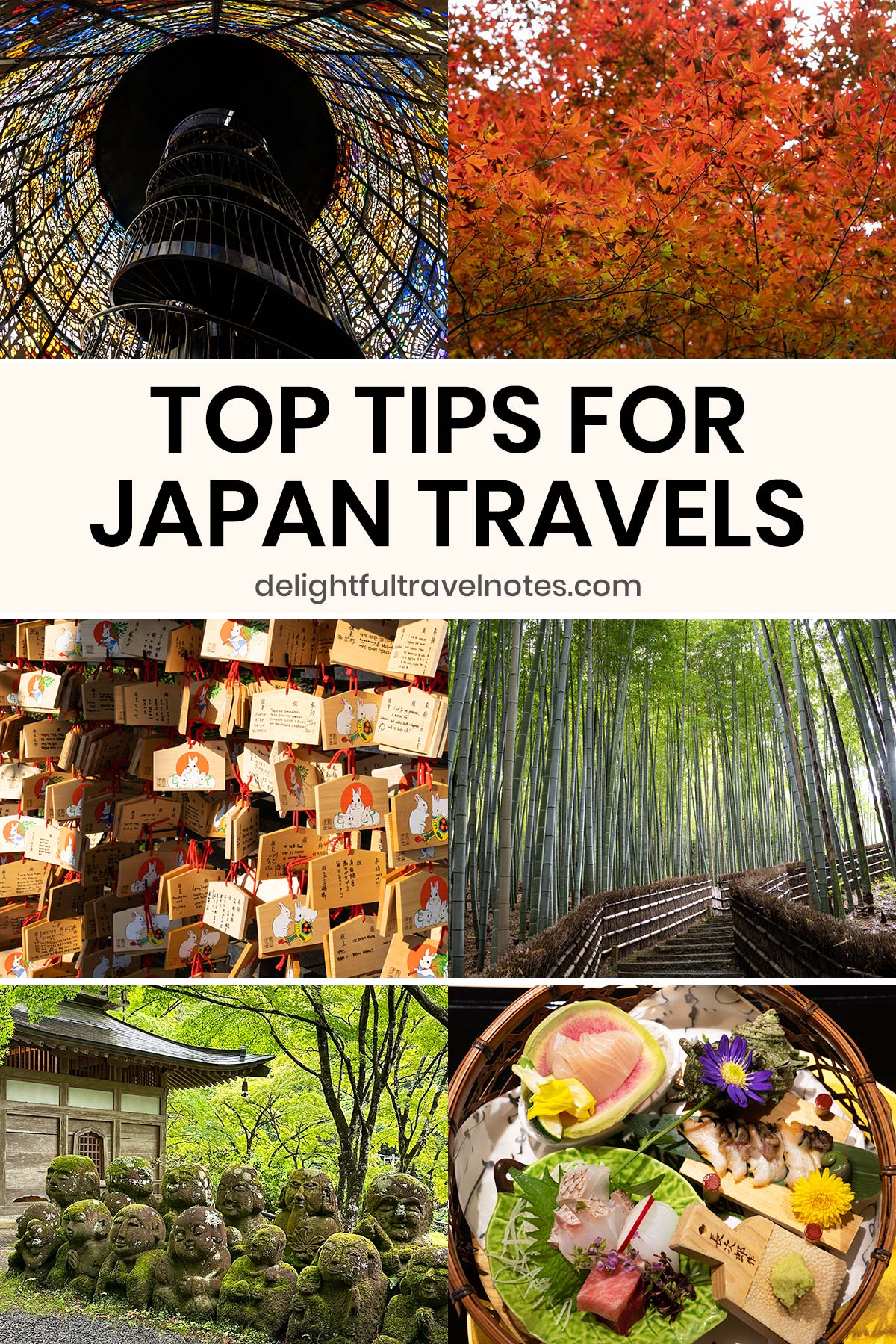
Japan is a destination that captivates visitors with its beautiful landscapes, rich history and culture, delectable cuisine, and kind people. However, we did find planning our first trip to Japan somewhat overwhelming. Japan, not being an English-speaking country, presents some concerns when traveling. Furthermore, the abundance of places to visit, experiences to partake in, and delicacies to savor can make the planning process feel complex.
That’s why we wanted to write this comprehensive guide based on our experience to alleviate those initial concerns and provide helpful tips. We hope that your first journey to the land of the rising sun will be a memorable one.
Plan Your Itinerary
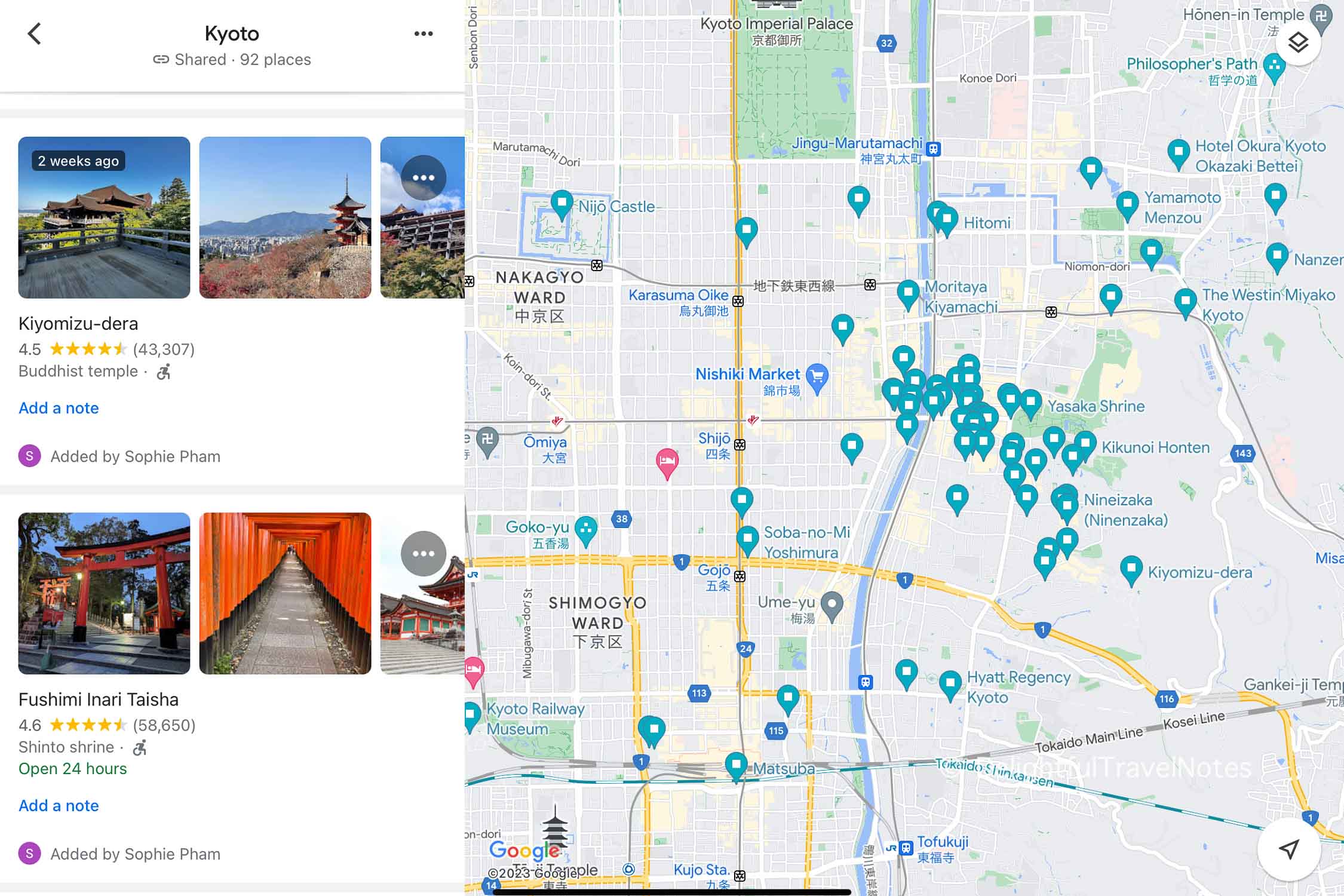
For preliminary planning, we like to use Google Maps to save all the potential places we may wish to visit. Then we assess where they are located to group them into areas for efficient traveling, and narrow down which areas we will actually visit.
Once you have an idea of areas to visit, we recommend Wanderlog, a user-friendly app, for creating, adjusting, and managing your actual travel plans. Keeping your itinerary well-organized ensures smooth transitions, making your trip hassle-free.
You can use Wanderlog to store all travel information related to the trip, such as reservations and bookings, and create a day-by-day itinerary which is super easy to edit.
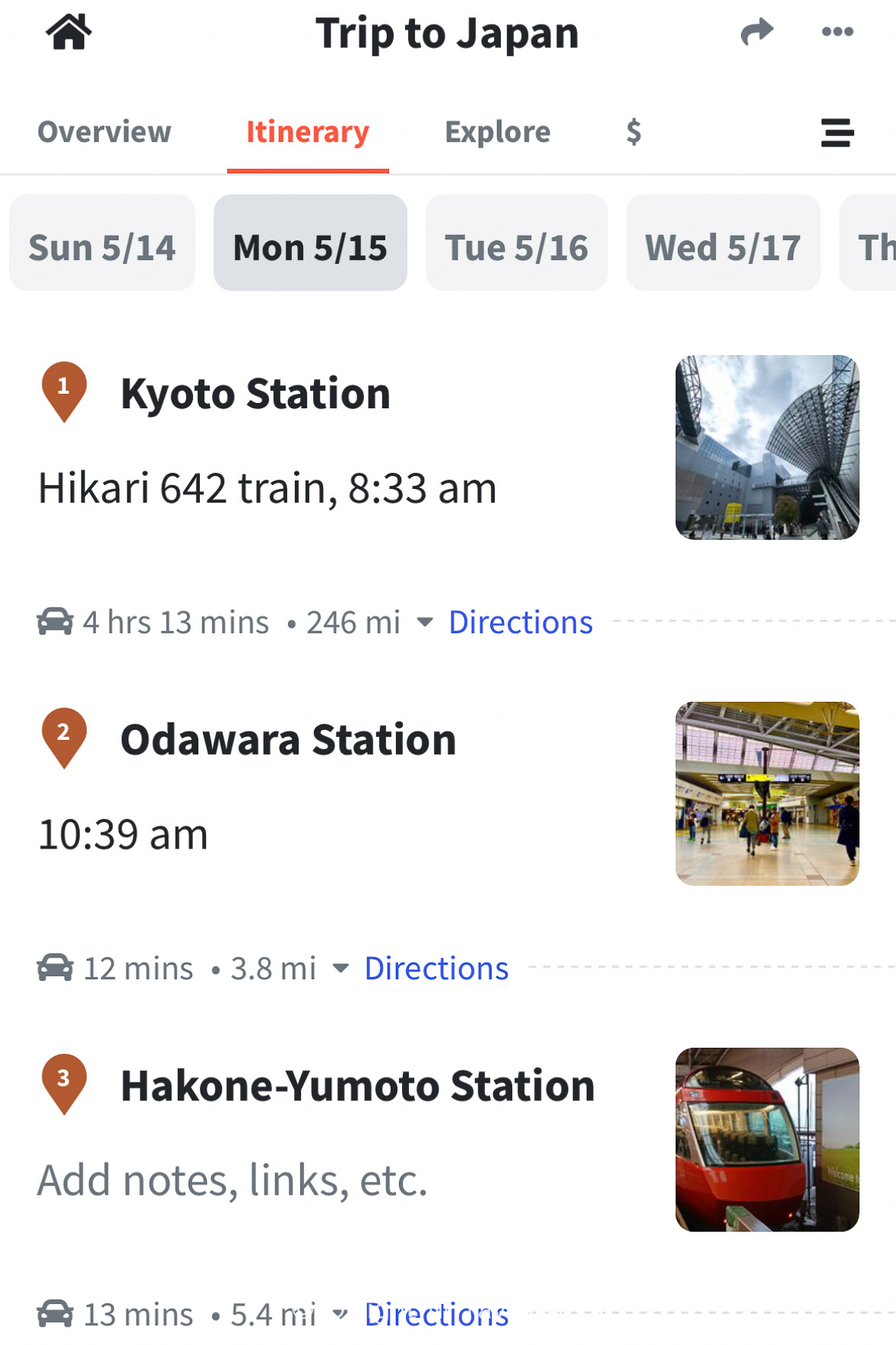
Stay Connected
There are different ways to stay connected during your trip. If your phones support eSim, we highly recommend either Ubigi or Airalo. The eSim can be installed in your phone before departure and activated once you arrive in Japan. You will have uninterrupted internet access from the start! We chose the 10GB for 30 days plan from Ubigi and the signals were reliable.
If your phone does not support eSIM, other viable options include getting a physical SIM card or a pocket wifi device at airports. These can be conveniently reserved online prior to your flight and picked up at the airport upon your arrival. However, be informed that obtaining a phone number with tourist SIM cards or eSims in Japan is usually not an option for tourists.
Transportation
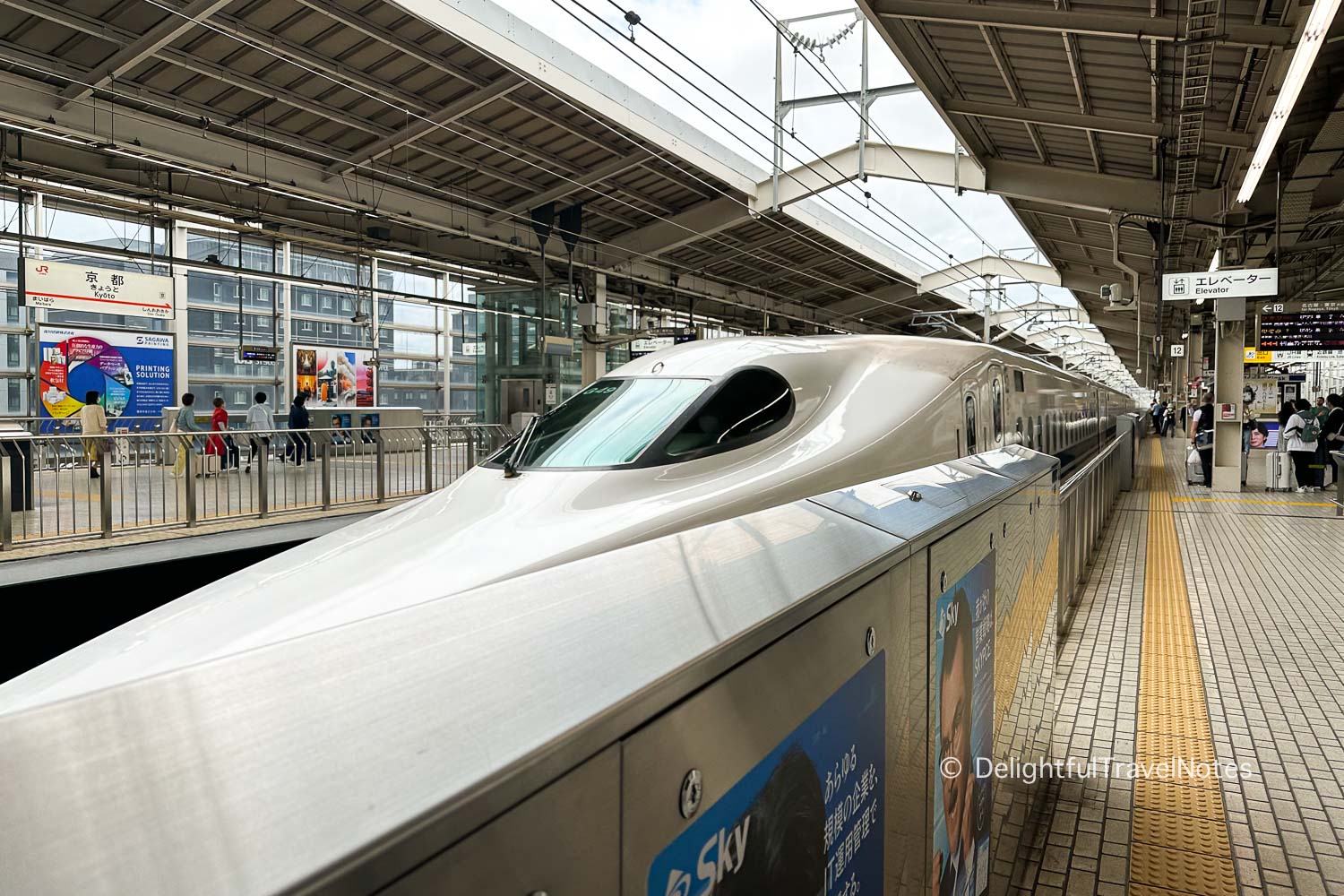
The extensive rail network in Japan makes traveling so easy and comfortable. However, it’s crucial to evaluate your itinerary to estimate whether a JR pass is worthwhile. You can use an online tool to assess whether a JR pass will pay off, such as this JR pass calculator. I would say for most travelers, the JR pass is not worth it.
If you travel to Japan during peak times such as the cherry blossom season, it is recommended to reserve seats on shinkansen trains. Buying an unreserved seat ticket during peak times may result in standing for the entire trip.
Additionally, when taking a shinkansen, don’t miss the chance to pick up an ekiben at the station. The term “ekiben” is a combination of “eki”, meaning station, and “bento”, meaning Japanese boxed meal. It’s a fun and delicious way to enjoy regional food while traveling across the country. Plus, there’s something satisfying about enjoying a carefully crafted meal while gazing out at the scenic countryside zooming past your window.
Bring Comfortable Shoes
Good shoes are essential for the significant amount of walking you’ll do in Japan. You will walk A LOT in Japan! The average daily number of footsteps may range from 15,000 to 30,000. My husband was very happy with his Asics Gel Kayano.
Besides, there are not many public benches at stations or attractions so plan for some small breaks here and there at a coffee or dessert/snack shop during the day. At the end of a long day, take advantage of the traditional ‘onsen’ (hot springs), or public baths in your hotel for a refreshing and relaxing soak in the evening to help your feet recover.
Research and Explore Local Cuisines
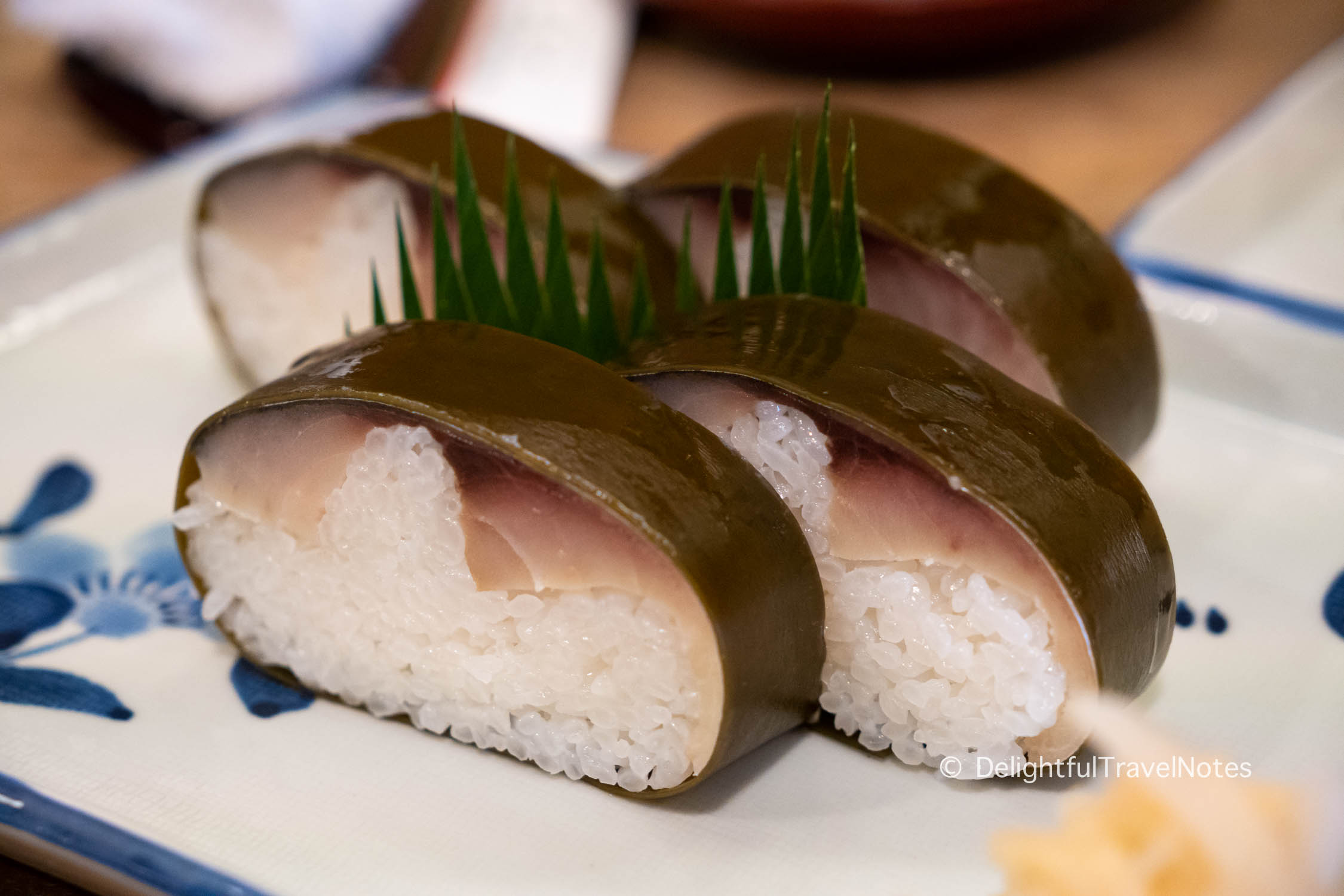
Japan’s culinary scene extends way beyond sushi and ramen. Each region has its own local cuisine and specialties that are worth exploring.
In Kyoto, for instance, you must try kaiseki (a traditional multi-course meal), nishin soba (herring over buckwheat noodles) and sabazushi (mackerel sushi). We also enjoyed trying and comparing the differences between Kansai-style and Kanto-style unagi (grilled eel).
- Need food recommendations for Kyoto? Read our list of top Kyoto local foods and restaurants to try.
- Not sure what to eat for breakfast and where in Japan? Read our Japan breakfast guide.
Restaurant Reservations
Japan has an incredible food scene and the general cooking standard is high, so it’s quite unlikely to have a bad meal when you are in Japan. A Japanese lady I know told me: “no one should worry about food when in Japan” since good food is everywhere.
However, if certain popular restaurants or dishes pique your interest, it is best to make reservations in advance. It is not uncommon to be turned away by some popular restaurants since they are fully booked and their dining rooms are often small.
Tabelog is a great platform for checking restaurant ratings – aim for those rated 3.5 or above. There are a number of Japanese restaurant bookings site such as Ikyu. Some of them are in Japanese only, but you can easily use the Translate function in Google Chrome. Your hotel concierge can also help you with making reservations. You can also try contacting restaurants via Instagram or Line. Here’s a detailed guide on how to make restaurant reservations in Japan.
Some popular places, especially ramen joints, may not accept reservations and the lines can be very long (1-2 hours). We personally wouldn’t want to spend our valuable time in Japan waiting in line 1-2 hours for food when there are many other decent options. If you must try places like that, try to show up early right at or before opening time.
Attraction Ticket Reservations
Japan boasts numerous attractions that are popular among not only international tourists but also local residents. Some attractions, such as Studio Ghibli Museum or teamLab Borderless digital art exhibitions, have a limited number of tickets available each day to ensure a quality experience for visitors.
Many attractions allow timed entry only, and booking in advance online can sometimes come with discounts or special package deals that aren’t available for same-day purchases at the venue. For example, Shibuya Sky tickets have fixed admission time. If you want to be there at sunset, you should reserve in advance since sunset time slots are very popular.
Invest in a Walking Tour
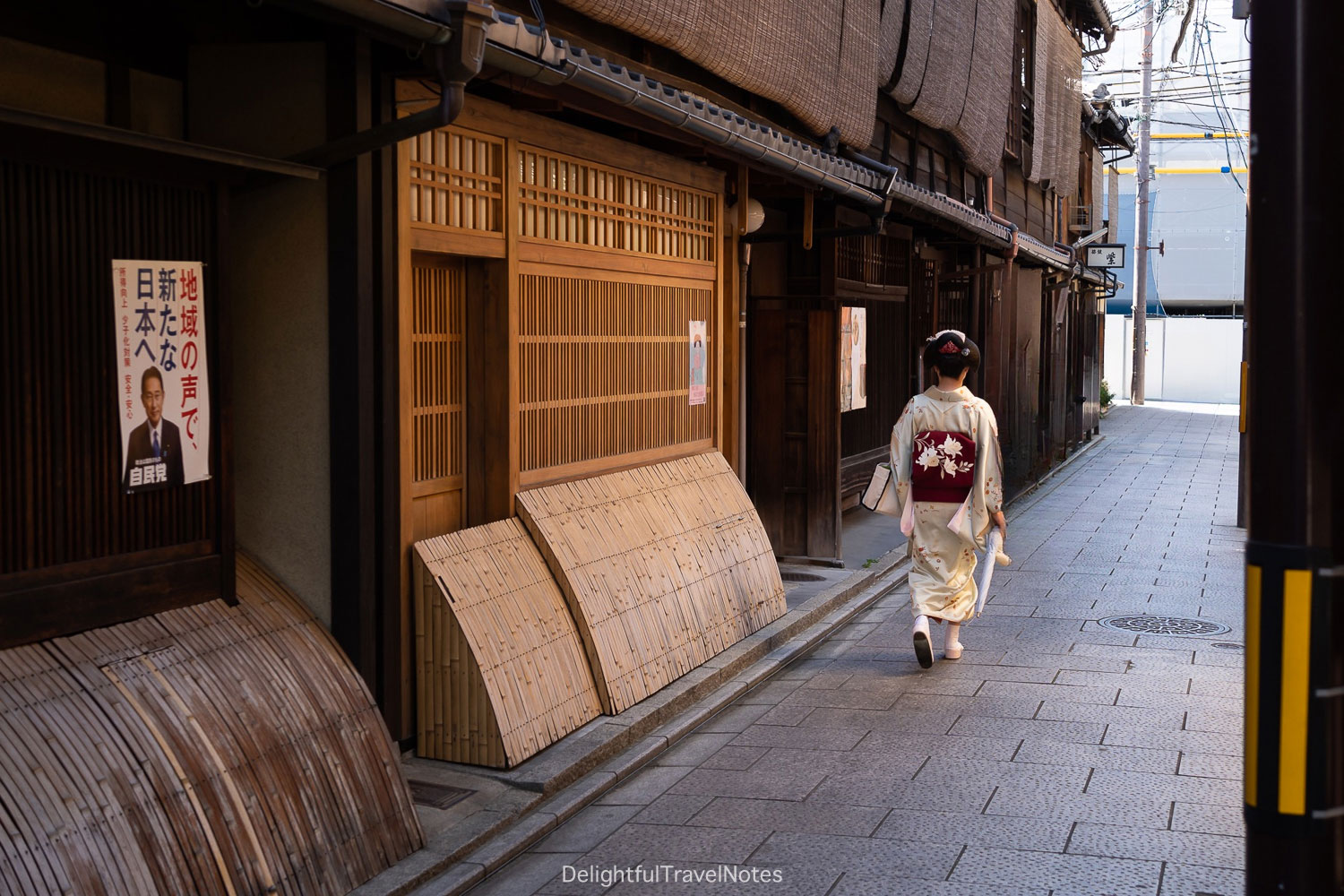
Some may disagree with us on this, but if you have the budget, consider immersing yourself in the local culture and history with a walking tour, especially in historically rich locations like Kyoto. It’s one of the things that are worth the splurge when visiting Japan in our opinion.
We totally enjoyed our half day walking tour in Kyoto with a professional guide we chose on toursbylocals.com. His tour provided insights into the history of Gion and the geisha profession, the differences between Shinto and Buddhism, and the nuances of Zen Buddhism and Pure Land Buddhism. He also recommended some excellent local restaurants we didn’t come across in our search. We are already eyeing a tour of Kyoto zen gardens for our next visit.
Language Preparation
While it’s not a must to know Japanese for traveling in Japan, a basic understanding of common phrases and words can greatly enrich your experience. This is particularly useful for interactive dining experiences at omakase or kappo restaurants, where knowing some Japanese can enhance your communication with the chef, thus improving your overall dining experience.
In our first visit, we could only speak basic and common sentences with very limited vocabularies from years of reading manga and watching anime. However, whenever we tried to speak some Japanese, people seemed to be very appreciative and more relaxed and friendlier with us.
Anyway, Japanese people are very polite and patient. Don’t be afraid to use Google translate to communicate with them if you need help.
Carry a Small Coin Purse and Mini Hand Sanitizer
In Japan, cash and coins are still used quite frequently, so we found having a small coin purse pretty handy. Additionally, you might come across restrooms without soap, making a mini hand soap or sanitizer a necessity. This is not very common fortunately, and we came across just 2 or 3 places in our first trip.
We put our coin purse, passports, train tickets, and camera in our sling bag for easy access.
Engage with the Culture
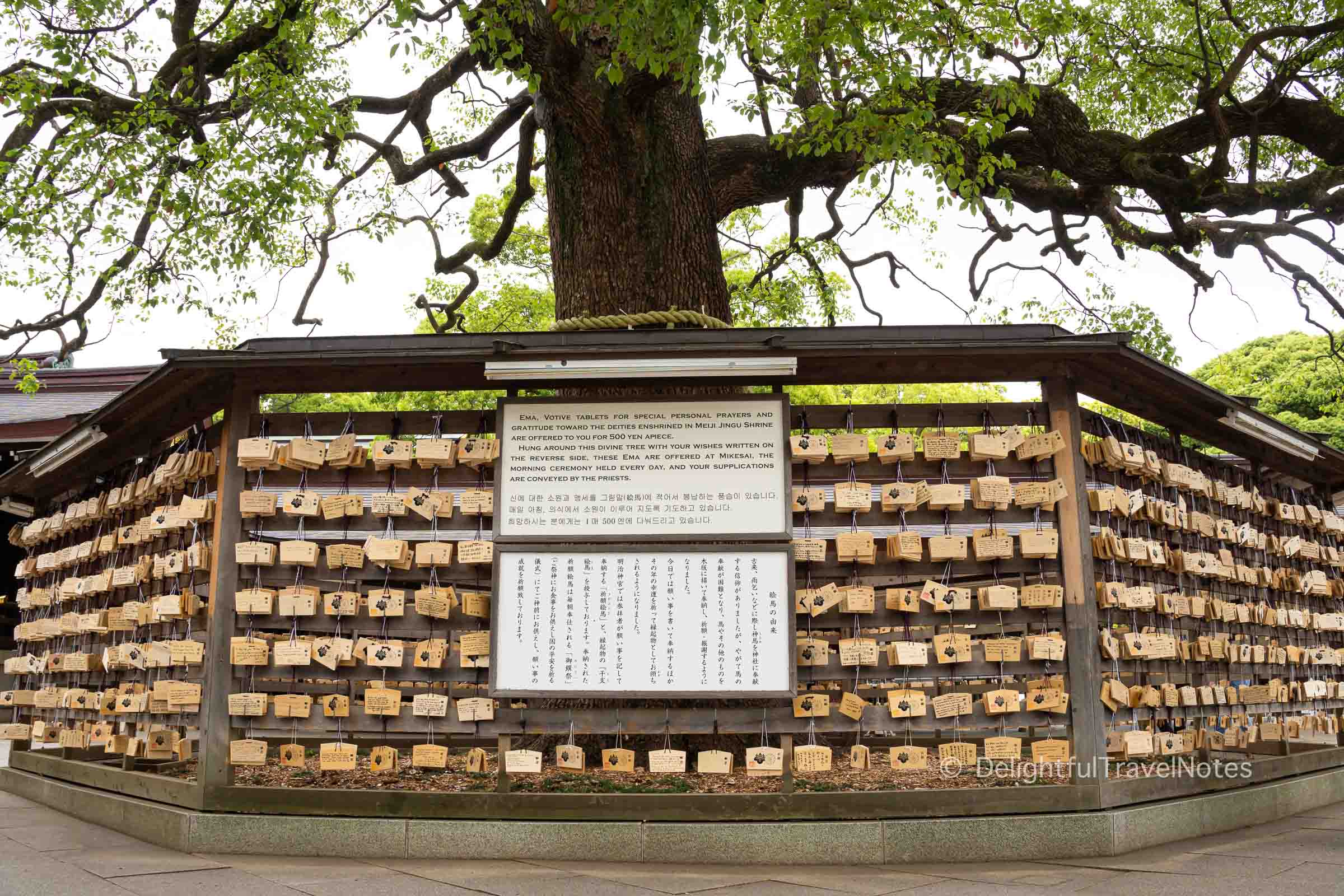
Embrace the Japanese culture by partaking in local traditions. You can get involved by praying at a Shinto shrine, writing your wishes on an “ema” (wooden wishing plaques), or collecting “goshuin” (stamps or seals given at shrines or temples). These activities are simple, but they allow us to participate in the culture, improving the overall experience.
The Meiji Jingu in Tokyo has a useful visual guide for how to pay a visit at Shinto shrines which we followed in our trip.
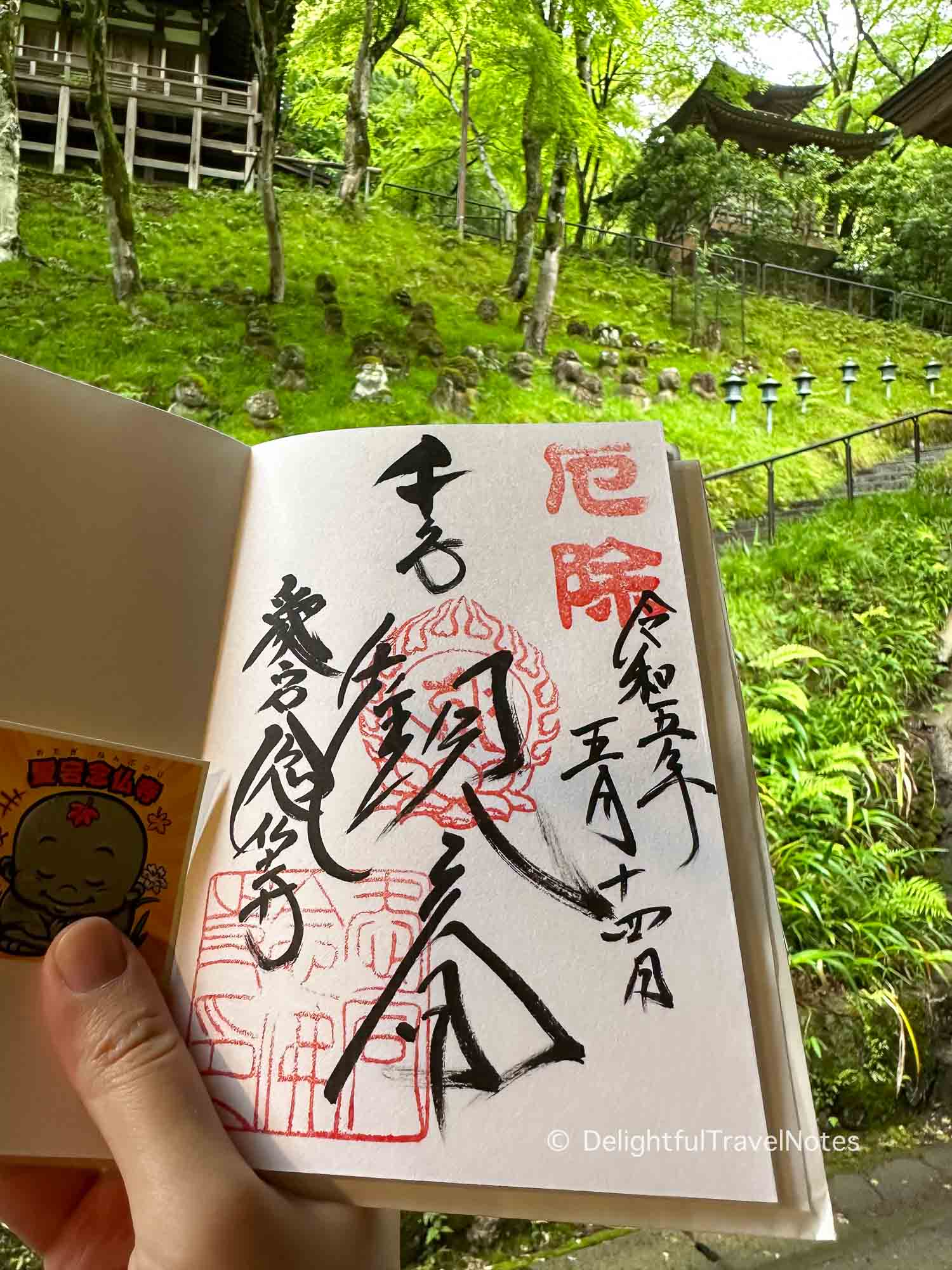
You can read my goshuin collecting guide here for more information and tips.
Visit Popular Attractions Early or Late in the Day
To avoid the crowds and enjoy the serene atmosphere, it is best to visit popular attractions such as Fushimi Inari Shrine, Kiyomizu-dera and Senso-ji early in the day, preferably by 7:30 am.
When we left Fushimi Inari at 8:30 am, it was already very crowded. If you cannot come early, try to climb a bit higher since the further you can go, the less crowded it will be. This shrine, famous for its thousands of vermilion torii gates, can also be visited at night for a unique experience.
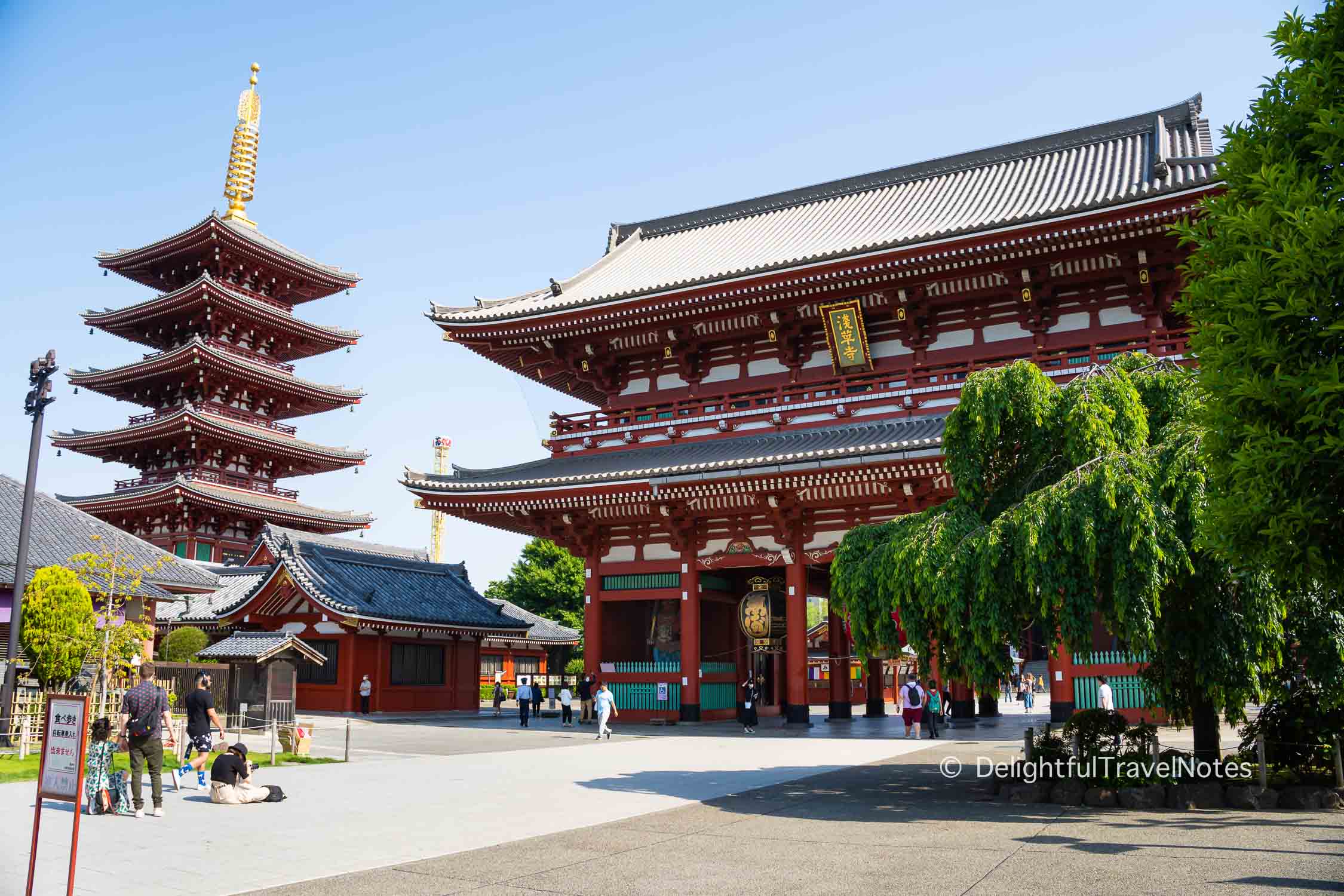
Consider Using Taxis Here and There
To cut down on travel time and amount of walking, consider using taxis occasionally. Some short trips taken with taxis can make your day more efficient and less tiring without breaking your bank. In addition, accessing some areas can be very time-consuming if you rely on local buses or trains only.
From our experience, the Japan Travel app by Navitime provides pretty close taxi fare estimates, helping you budget your transportation expenses.
Venture off the Beaten Path
Visiting lesser-known places can bring you rewarding experiences. Exploring these hidden gems can give you a more intimate experience with the local culture.
For example, there are other bamboo groves in Kyoto that offer a peaceful atmosphere compared to the overcrowded Arashiyama Bamboo Forest. In this Arashiyama self-guided walking route, I included some lesser visited corners of the area. The majority of tourists in Kyoto congregate at just a few locations, including Kiyomizu-dera, Kinkaku-ji, the bottom half of Fushimi Inari, and the area around the bamboo forest.

Respectful Attire and Behaviors
While there’s no strict dress code at Japanese shrines or temples, we think it’s more appropriate to dress smart-casual and avoid wearing revealing or tight-fitting clothes (such as tank tops, sweats and work out clothes) out of respect for the cultural setting. It’s also important to keep your voice down to maintain the peaceful environment (and this is also recommended for other public spaces in Japan such as stations and trains).
It is true that people will know you (and us) are tourists so it will be very unlikely they will say anything about what you wear in Japan. However, in case you don’t want to stick out, you may want to leave super casual clothes at home.
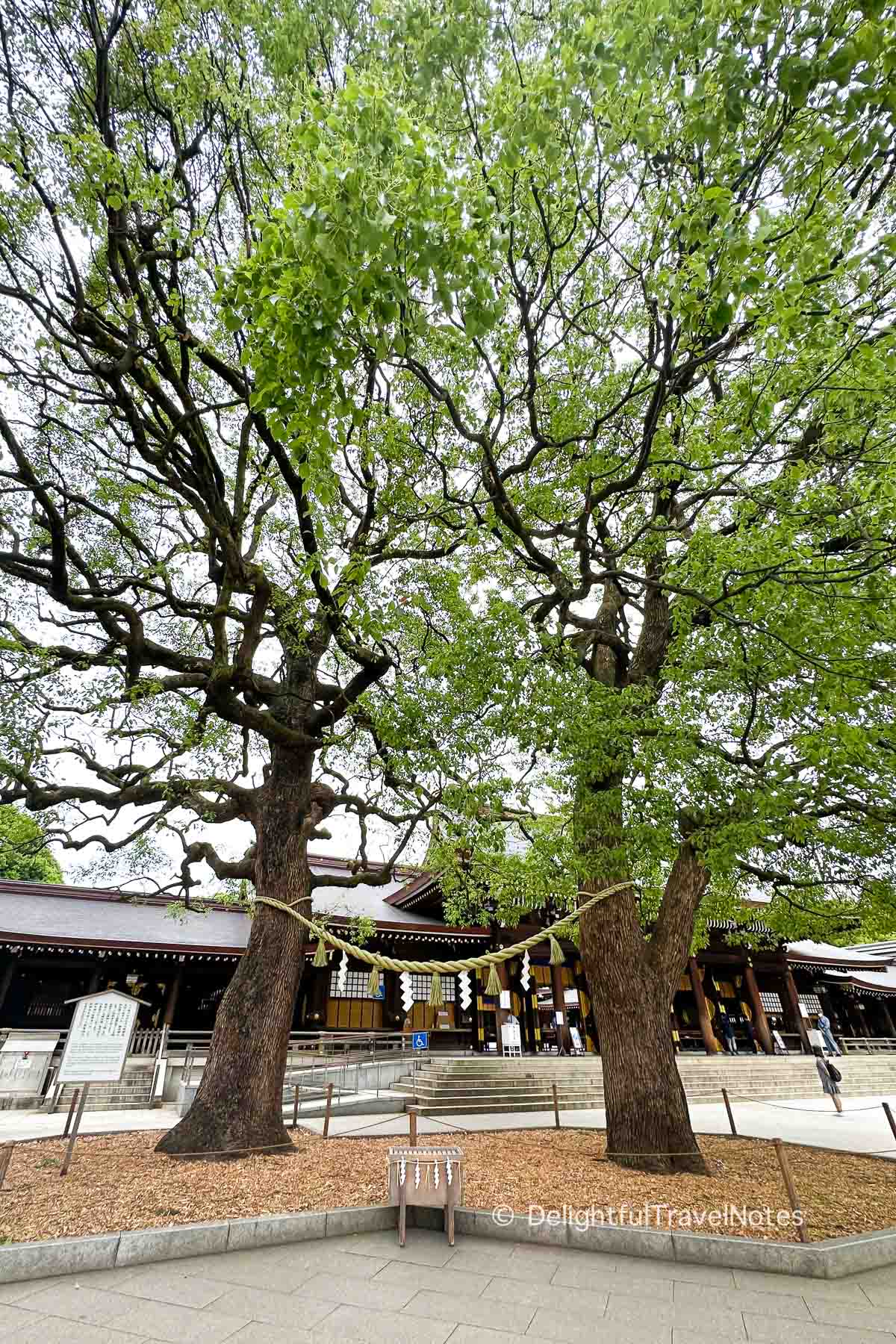
You can read more about general etiquette at Japanese temples and shrines here.
Eating and Drinking Habits
In Japan, it’s generally considered inappropriate to eat or drink while walking in public. Not a super strict rule but it’s a good idea to follow this custom if you can. Once you buy a snack or drink, you can eat directly in front of the store before continuing walking.
Another thing to note is it may not be easy to find trash bins sometimes, so you may want to bring a small bag to store your trash. It’s even better not to generate any trash in the first place.
Luggage Delivery Service
It’s best to travel light whenever possible but using a luggage delivery service, such as Yamato, can greatly ease your travel in Japan. It’s an easy and convenient service, that can deliver your luggage from one hotel to another or from an airport to your hotel. The hotel front desk can often help arrange the delivery of your luggage to another one, but make sure to check with the destination hotel in advance if they accept luggage forwarding.
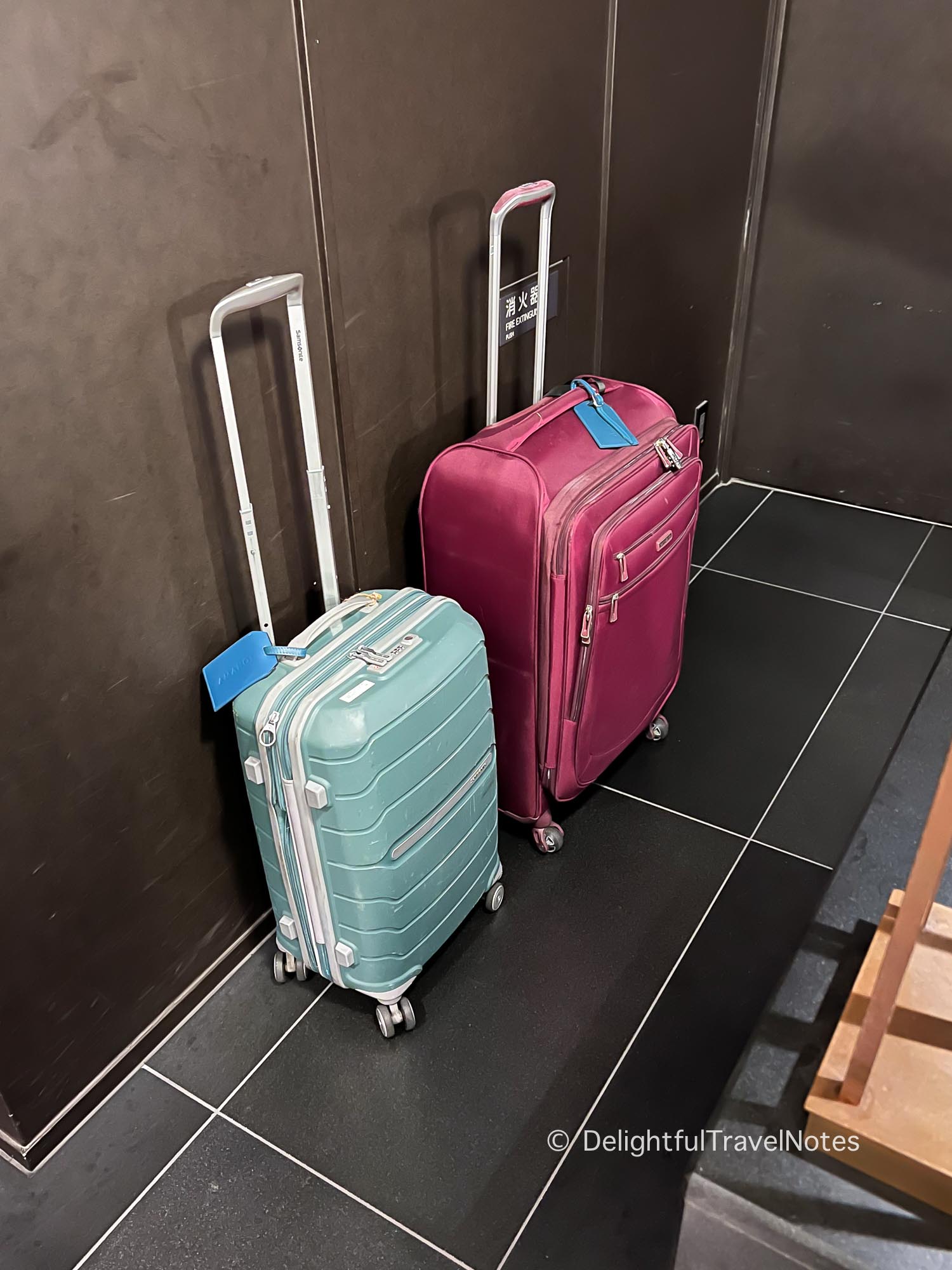
In terms of costs, it is not very expensive. We paid about 2,000 yen for each suitcase sent from Kyoto to Tokyo with Yamato deliver service, for example. The front desk at the Celestine Hotel Gion handled everything for us.
Basement Food Halls/Markets (Depachika)
Depachika are large basement food halls in department stores where you can find high-quality bentos, sweets, snacks, fruits and edible souvenirs to bring home from Japan. If you love food, it’s worth visiting even if you don’t plan to buy anything! They’re a feast for the eyes and offer a variety of options to choose from. Many of them are very affordable.
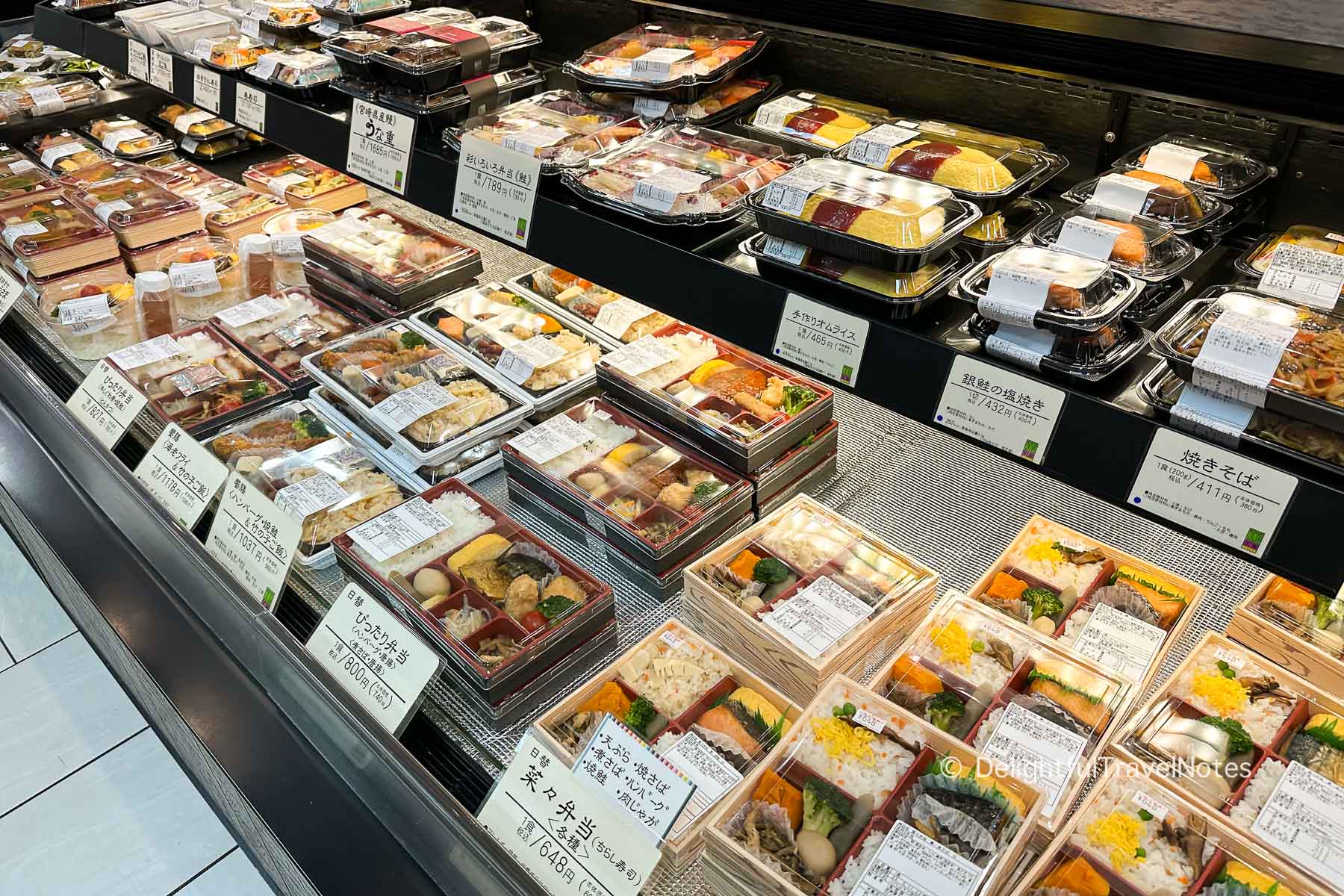
If you’re too tired to dine out, you can grab a bento for a tasty and convenient meal in your hotel room. That’s what we did for some nights. Our favorite depachika were at Takashimaya (many cities in Japan) and Tokyu Food Show (Tokyo).
Don’t Cram Too Many Places in One Day
Our last tip is to avoid planning too many places in one day. Plan two to three main things to do for each day, and then be flexible with the plan and ready to make changes if necessary.
We all want to make the best out of the time in Japan, however you may encounter bad weather, or your feet feel tired, or it takes more time to get from one place to another than you expect and you want to stay at a place longer. Just take it easy and enjoy the moment, knowing that there will still be places to visit in your next trip.
We hope these tips will help you prepare a well-planned and thoroughly enjoyable trip to Japan. If you have other tips to share, please feel free to comment. Happy travels!

Explore More
Review: Madoka no Mori Ryokan in Hakone
Top 12 Best Ryokan in Hakone with Private Onsen
Arashiyama Self-Guided Walking Tour & Things to Do